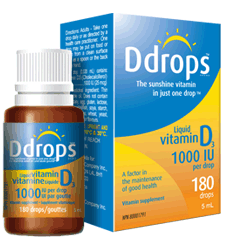Dr. Christopher Lu MBchB FRCSC / Darryl Yardley M.Sc.PT
Ankle ligament reconstruction post-op protocol
PRE-OPERATIVE PHYSIOTHERAPY:
- Gait training, advice on edema control and pain management: rest, elevation, cold therapy
- Ankle strengthening; Proprioception
- Assess with AOFAS Ankle/Hindfoot Scale
- Learn how to use - crutches, knee scooter, cast protector, cast boot and cold therapy unit
- Please Call Restore Physiotherapy Georgetown - 905-702-1840 to book your pre-operative physiotherapy appointment.
- Post-operative physiotherapy can be completed either at Restore Physio Georgetown or a reputable physiotherapy clinic near your home.
- Post-operative in home physiotherapy is also available with: www.therapia.com
- Learn how to use - crutches, knee scooter, cast protector, cast boot and cold therapy unit
- Please Call Restore Physiotherapy Georgetown - 905-702-1840 to book your pre-operative physiotherapy appointment.
- Post-operative physiotherapy can be completed either at Restore Physio Georgetown or a reputable physiotherapy clinic near your home.
- Post-operative in home physiotherapy is also available with: www.therapia.com
0 - 2 WEEKS:
- Non-weight wearing in below knee fiberglass back slab. Please note back slab is open on 3 sides this allows use of cold therapy wrap. Although you are technically non-weight bearing - not allowed to walk on the leg, you are allowed to stand and put pressure on the foot, ie. when brushing your teeth, sitting in a chair.
- Leg elevation and cold therapy for edema control
- Mobilize with crutches, knee scooter, iwalk. Please note the knee scooter is the safest option for extended mobilization.
- Keep cast boot and dry - use cast protector in shower
- Leg elevation and cold therapy for edema control
- Mobilize with crutches, knee scooter, iwalk. Please note the knee scooter is the safest option for extended mobilization.
- Keep cast boot and dry - use cast protector in shower
- Wound check at 2 weeks post-op
- Toe curls, toe spreads / extension
- Take aspirin 81 mg or 325 mg - once a day for DVT prophylaxis - if there are no contraindications or allergies.
- Take aspirin 81 mg or 325 mg - once a day for DVT prophylaxis - if there are no contraindications or allergies.
2 - 6 WEEKS:
- Attend fracture clinic for follow-up appointment, back slab removed, wound examined.
- Immobilized in short leg fiberglass cast for a further 4 weeks. Please note this option has the lowest rate of wound breakdown / infection - approximately 1%. You have the option of transitioning to a long leg cast boot at this point in time, however this has a higher wound complication rate - approximately 20%.
- Limit ankle ROM to prevent wound break down.
- Keep cast clean and dry - use cast protector in shower
- Toe curls, toe spreads / extension
- Leg lifts and extension to keep quads strong.
- Leg lifts and extension to keep quads strong.
- Take aspirin 81 mg or 325 mg - once a day for DVT prophylaxis - if there are no contraindications or allergies
6 - 12 WEEKS:
- 6 weeks - cast removed.
- Have the option of transitioning to long cast boot or ankle brace.
- Start physiotherapy at 6 weeks post-op
- ROM (Range of motion) in unilateral planes focus on dorsiflexion and progress to active exercises in protected ranges, avoid inversion, ankle traction, and tibio-fibular mobilization.
- Proprioception exercises, intrinsic muscle strengthening, start isometric eversion.
- Soft tissue treatments (plantar fascia, gastroc/soleus, achilles) and regular mobilization of intermetatarsal and midtarsal joints.
- Passive and active range of motion exercises (restore full ROM / multi-planar motions)
- Open kinetic and closed kinetic chain strengthening.
- Gradually progress closed-chain and balance / proprioception.
- Cycling, aerobic machines as tolerated.- AVOID: ankle traction, forced plantarflexion and ankle inversion for 12 weeks
3 - 6 MONTHS:
- Progress back into athletics based upon functional status at discretion of Orthopaedic Surgeon.
- Assess with AOFAS Ankle/Hindfoot Scale (Post-op - 3 months and 6 months)
Diet plays an important role in post-op recovery.
- Please limit your intake of processed foods, junk food, fast food, sugar, artificial sweeteners, no soft drinks, and specifically no diet coke...
- If you are unable to dedicate time to your recovery - we do not recommend proceeding with surgery.
If you are interested in losing weight please continue reading:
- If you have time please read the book the Obesity Code by Dr. Jason Fung
https://www.amazon.ca/Obesity-Code-Unlocking-Secrets-Weight/dp/1771641258
If you are interested in losing weight please continue reading:
- If you have time please read the book the Obesity Code by Dr. Jason Fung
https://www.amazon.ca/Obesity-Code-Unlocking-Secrets-Weight/dp/1771641258
- If you are a diabetic I would consider reading the book the Diabetes Code by Dr. Jason
- If you are a diabetic I would recommend looking into purchasing a Free Style Libre CGM to better monitor your diabetes, the better your diabetic control the faster you will heal and this will also decrease your risk of infection.
- The Diet Doctor Website is also good to read:
https://www.dietdoctor.com/how-to-lose-weight
- There is also a good - Dr. Jason Fung support group on Facebook
- There is also a good - Dr. Jason Fung support group on Facebook

























